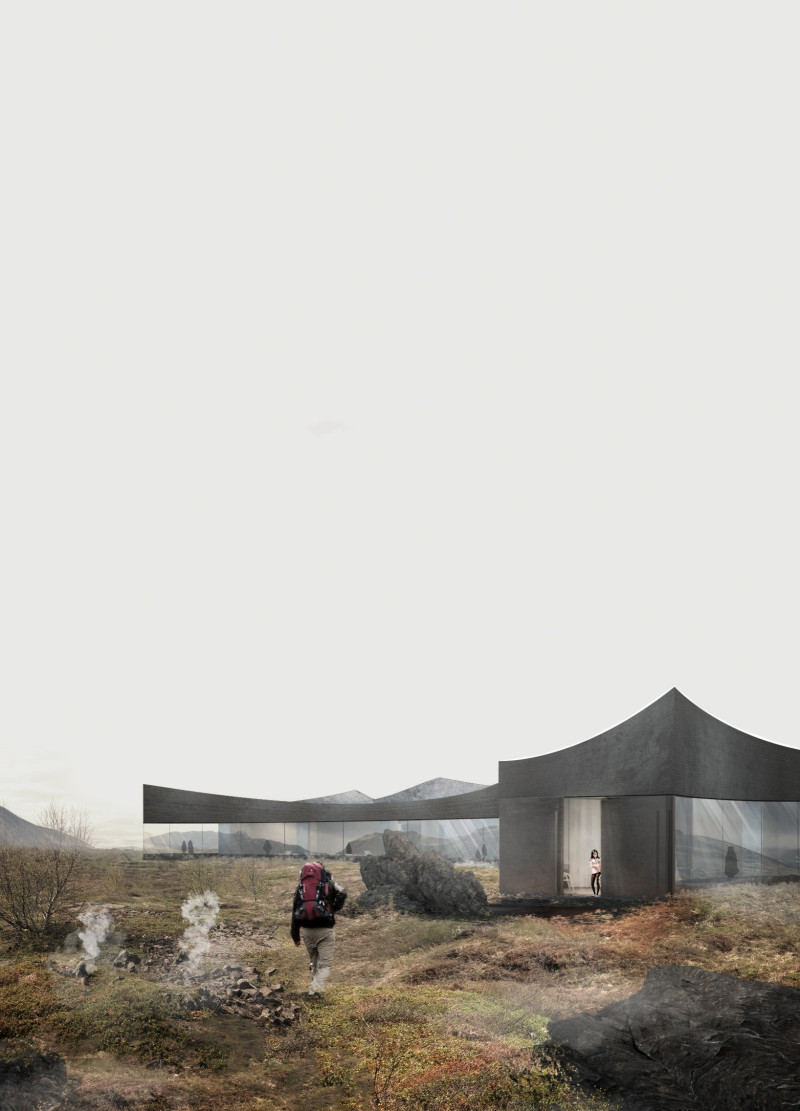5 key facts about this project
The Hverfjall Museum is situated in the distinct volcanic landscape of Iceland and serves as a space for exhibitions that reflect the natural environment. The design emphasizes a strong connection between the building and the surrounding topography. With its curved forms, the structure aims to blend into the geological features that define the area, creating a museum experience that harmonizes with the landscape.
Design Framework
The layout of the museum guides visitors right from the entrance, which is accessed via Pjodvegur Street in the north. Upon entering, the main foyer acts as the core space, directing movement to various areas, including exhibition halls, a coffee shop, and multifunctional rooms. This arrangement supports a clear flow, helping visitors engage meaningfully with the different spaces and creating an intuitive experience.
Roof Design
An important aspect of the design is the roof, which showcases various heights that resemble the shape of a volcanic crater. This not only connects the building visually to the landscape but also enhances its role as part of the site. The varied roof profile encourages exploration and allows sunlight to filter through, enriching the interior atmosphere.
Facade Composition
The exterior of the museum is designed simply, ensuring a strong relationship with the environment. The lower part of the facade is covered in mirrors up to a height of three meters, reflecting the changing light and landscape. Above, a dark-colored sanded concrete edge provides structural support without drawing attention away from the reflective lower section. This thoughtful approach helps maintain the visual focus on the natural beauty surrounding the building.
Landscape Integration
Paths leading to the museum utilize lawn grid elements that promote interaction with the outdoor environment. Gravel is used for the underground parking, further minimizing impact on the landscape. This careful consideration of pathways and parking facilities allows the design to coexist with the geological features while providing necessary access points.
The reflective surfaces of the museum work to capture and display light in various ways throughout the day. This interaction with the changing seasons provides visitors with a unique experience each time they visit, reinforcing the connection between the museum and the striking Icelandic landscape.






















































